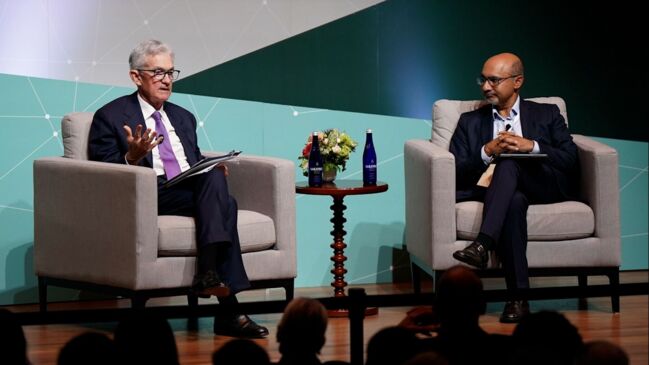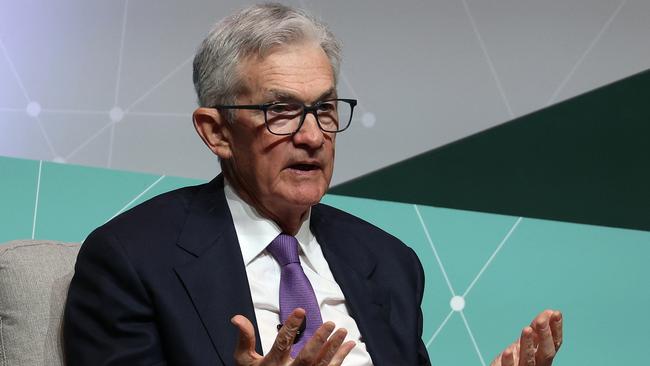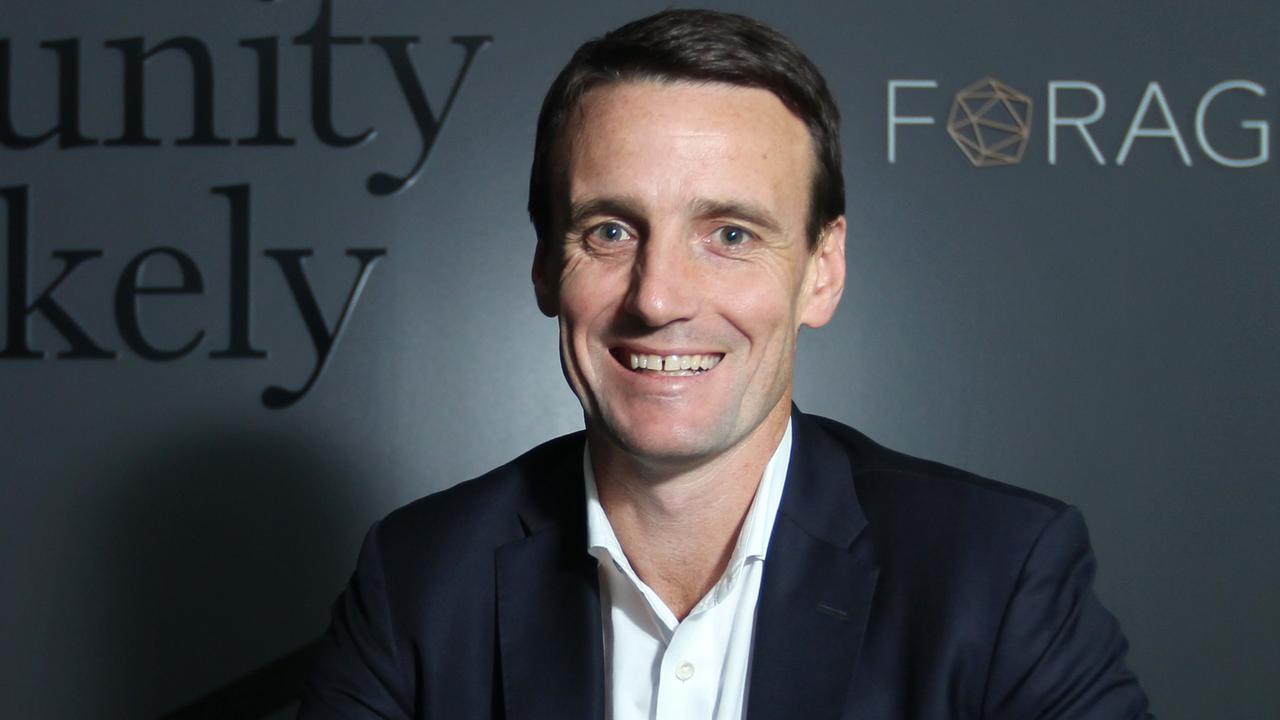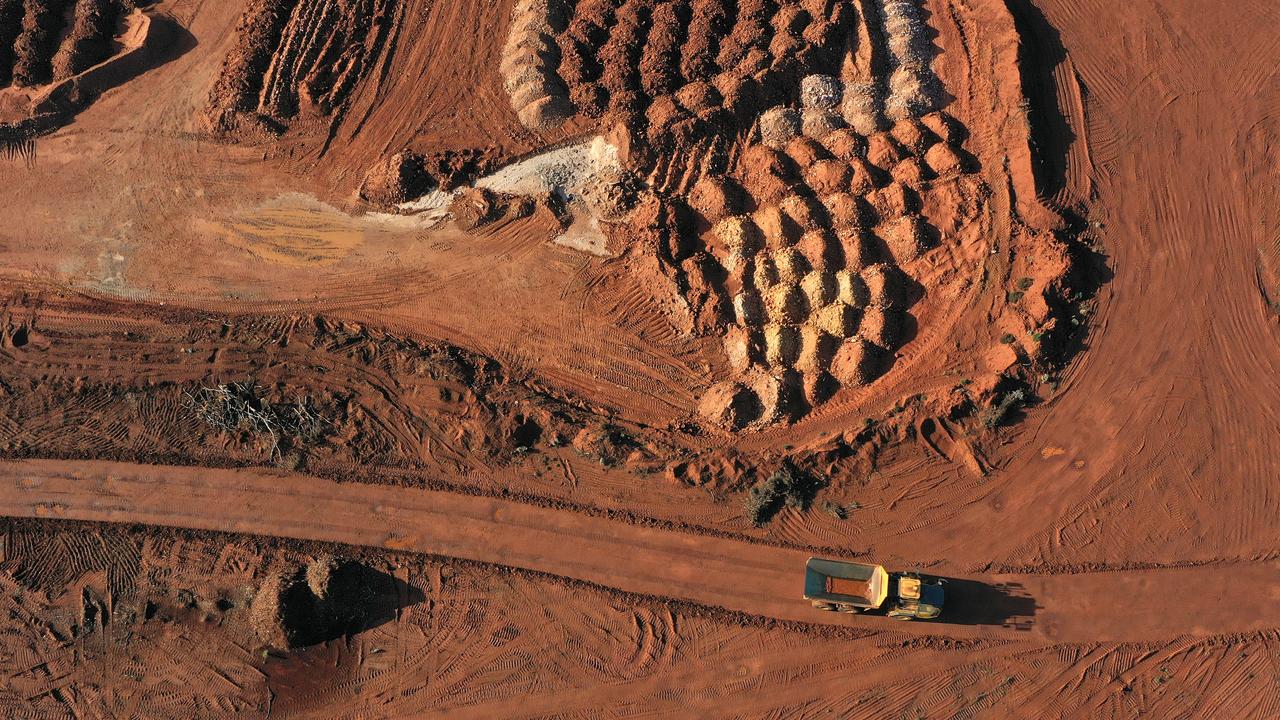Jerome Powell outlines ‘bumpy’ path to US inflation target
Federal Reserve chairman Jerome Powell continues to sound a dovish message on the outlook for interest rates in the US.

Federal Reserve chairman Jerome Powell continues to sound a dovish message on the US interest rate outlook.
He says it’s too soon to know if the recent higher than expected inflation outcomes are more than just a “bump”, but interest rate cuts are still likely “at some point this year”.
However, there’s a growing risk of delays, with potentially negative implications for asset markets.
Together with a weaker-than-expected ISM services sector report on Wednesday, Powell’s view that inflation is still moving down towards 2 per cent despite higher than expected outcomes in recent months offsets concern about a stronger-than-expected ISM manufacturing report this week.
Thanks in large part to the AI boom the S&P 500 has risen about 10 per cent this year, even as the 10-year bond yield rose from 3.87 per cent to 4.43 per cent – its highest point since November.
The sharp rise in the risk-free rate – against which other investments are measured – comes as stronger than expected economic growth and inflation plus less dovish comments from Fed officials led the money market to dial back the number of interest rate cuts implied this year from seven to fewer than three. A first rate cut was expected in March. Now it isn’t expected until July.
“Although the soft landing or immaculate disinflation thesis has emerged as the dominant macro scenario on the expectation that the Fed and other central banks are determined to cut rates this year, we believe we are not out of the woods yet in terms of the more adverse economic scenario of core inflation proving stickier than expected and central banks postponing their planned rate cuts, thus prolonging uncertainty,” said JPMorgan head of derivatives strategy, Nikolaos Panigirtzoglou.
With the US sharemarket priced for perfection and the US 10-year bond yield near its highest levels this year, bulls will be hoping for a “Goldilocks” outcome from US non-farm payrolls data on Friday.
In his Stanford Graduate School of Business speech, Powell acknowledged that both job gains and inflation had “come in higher than expected this year”.
But that didn’t “materially change the overall picture”, according to Powell.
That picture continues to be one of “solid growth, a strong but rebalancing labour market, and inflation moving down towards 2 per cent on a sometimes bumpy path”.

Few would argue that the US economic growth remains solid. Bloomberg’s consensus estimate for 2024 GDP growth has been revised up from 1.2 per cent to 2.2 per cent.
Surveyed recession fears of economists have faded to 35 per cent, from almost 70 per cent early last year. Growth is now expected to reaccelerate from 1.7 per cent in 2025 to 2 per cent in 2026.
The question is whether inflation will fall “sustainably” back to 2 per cent without a “sustained period of below-trend growth”. Powell had previously said that was likely to be necessary.
In his Jackson Hole speech in August 2022, Powell said that below trend economic growth and “some pain” was likely to be needed to restore price stability in the US.
US inflation has come down a long way since the Fed started lifting rates in March 2022. Core PCE inflation – the Fed’s preferred measure – has fallen to 2.8 per cent, from 5.5 per cent.
Powell this week said “reducing rates too soon or too much could result in a reversal of the progress we have seen on inflation and ultimately require tighter policy to get inflation back to 2 per cent”.
Of course he also said that “easing policy too late or too little could unduly weaken economic activity and employment”. As progress on inflation continues and labour market tightness eases, these risks “continue to move into better balance”, according to Powell.
He said labour market rebalancing was evident in data on job openings, surveys of employers and workers, and the continued gradual decline in wage growth.
But Powell didn’t sound quite so optimistic about further disinflation.
“On inflation, it is too soon to say whether the recent readings represent more than just a bump,” he said. “Given the strength of the economy and progress on inflation so far, we have time to let the incoming data guide our decisions on policy.”
That puts focus on upcoming inflation data, starting with CPI inflation next Wednesday.
As outlined in his August 2022 speech at Jackson Hole, Powell is a student of the US experience with sustained high inflation in the 1970s and 1980s.
One of the “lessons” he outlined at that time was that the “public’s expectations about future inflation can play an important role in setting the path of inflation over time”.
While noting that longer-term inflation expectations appeared to be well anchored, he said “that is not grounds for complacency, with inflation having run well above our goal for some time”.
A second lesson outlined at the time was that the Fed “must keep at it until the job is done”. The Fed may want to cut rates soon to avoid a rise in real interest rates that adds to its policy tightening.
But with inflation proving sticky and no recession on the horizon, it’s hard to argue at this point that the “job is done” to the extent that the Fed can rapidly normalise interest rates.
The Fed took a big risk by taking so long to start lifting rates after the pandemic and, while inflation has fallen, Powell will remain wary of the risk of high inflation becoming entrenched.
After resolving in late 2020 to let inflation run hotter than its 2 per cent goal, the Fed spent much of 2021 describing high inflation as “transitory”. In September that year, Powell stopped calling inflation and supply chain bottlenecks “transitory”.






To join the conversation, please log in. Don't have an account? Register
Join the conversation, you are commenting as Logout